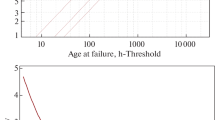Abstract
Statistical quantities, such as expectation (mean) and variance, play a vital role in the present age probabilistic analysis. In this paper, we present some formalization of expectation theory that can be used to verify the expectation and variance characteristics of discrete random variables within the HOL theorem prover. The motivation behind this is the ability to perform error free probabilistic analysis, which in turn can be very useful for the performance and reliability analysis of systems used in safety-critical domains, such as space travel, medicine and military. We first present a formal definition of expectation of a function of a discrete random variable. Building upon this definition, we formalize the mathematical concept of variance and verify some classical properties of expectation and variance in HOL. We then utilize these formal definitions to verify the expectation and variance characteristics of the Geometric random variable. In order to demonstrate the practical effectiveness of the formalization presented in this paper, we also present the probabilistic analysis of the Coupon Collector’s problem in HOL.
Similar content being viewed by others
References
Adler, I., Ahn, H., Karp, R.M., Ross, S.M.: Coalescing times for IID random variables with applications to population biology. Random Struct. Algorithms 23(2), 155–166 (2003)
Adler, M., Halperin, E., Karp, R.M., Vazirani, V.V.: A stochastic process on the hypercube with applications to peer-to-peer networks. In: Proc. 35th Annual ACM Symposium on Theory of Computing, pp. 575–584. ACM, New York (2003)
Audebaud, P., Paulin-Mohring, C.: Proofs of randomized algorithms in coq. In: Mathematics of Program Construction. LNCS, vol. 4014, pp 49–68. Springer, New York (2006)
Bratley, P., Fox, B.L., Schrage, L.E.: A Guide to Simulation. Springer, New York (1987)
Baier, C., Haverkort, B., Hermanns, H., Katoen, J.P.: Model checking algorithms for continuous time markov chains. IEEE Trans. Softw. Eng. 29(4), 524–541 (2003)
Bialas, J.: The σ-additive measure theory. J. Formaliz. Math. 2 (1990)
Billingsley, P.: Probability and Measure. Wiley, New York (1995)
Celiku, O.: Quantitative temporal logic mechanized in HOL. In: Theoretical Aspects of Computing. LNCS, vol. 3722, pp. 439–453. Springer, New York (2005)
Clarke, E.M., Grumberg, O., Peled, D.A.: Model Checking. MIT, Cambridge (2000)
Church, A.: A formulation of the simple theory of types. J. Symb. Log. 5, 56–68 (1940)
DeGroot, M.: Probability and Statistics. Addison-Wesley, Reading (1989)
Devroye, L.: Non-Uniform Random Variate Generation. Springer, New York (1986)
Dimitrov, N.B., Plaxton, C.G.: Optimal cover time for a graph-based coupon collector process. In: Automata, Languages and Programming. LNCS, vol. 3580, pp. 702–716. Springer, New York (2005)
Gordon, M.J.C., Melham, T.F.: Introduction to HOL: A Theorem Proving Environment for Higher-Order Logic. Cambridge University Press, Cambridge (1993)
Grinstead, C.M., Snell, J.L.: Introduction to Probability. American Mathematical Society, Providence (1997)
Harrison, J.: Theorem Proving with the Real Numbers. Springer, New York (1998)
Hurd, J., McIver, A., Morgan, C.: Probabilistic Guarded Commands Mechanized in HOL. Theor. Comp. Sci. 346, 96–112 (2005)
Hasan, O., Tahar, S.: Formalization of the continuous probability distributions. In: Automated Deduction. LNAI, vol. 4603, pp. 3–18. Springer, New York (2007)
Hasan, O., Tahar, S.: Verification of expectation properties for discrete random variables in HOL. In: Theorem Proving in Higher-Order Logics. LNCS, vol. 4732, pp. 119–134. Springer, New York (2007)
Hasan, O., Tahar, S.: Verification of probabilistic properties in HOL using the cumulative distribution function. In: Integrated Formal Methods. LNCS, vol. 4591, pp. 333–352. Springer, New York (2007)
Hurd, J.: Formal verification of probabilistic algorithms. PhD Thesis, University of Cambridge, Cambridge (2002)
Khazanie, R.: Basic Probability Theory and Applications. Goodyear, Los Angeles (1976)
Kwiatkowska, M., Norman, G., Parker, D.: Quantitative Analysis with the Probabilistic Model Checker PRISM. Electron Notes Theor Comp Sci Elsevier 153(2), 5–31 (2005)
Levine, A.: Theory of Probability. Addison-Wesley Series in Behavioral Science, Quantitative Methods. Addison-Wesley, Reading (1971)
Leon Garcia, A., Widjaja, I.: Communication Networks: Fundamental Concepts and Key Architectures. McGraw-Hill, New York (2004)
Mao, W.: Modern Cryptography: Theory and Practice. Prentice Hall, Englewood Cliffs (2003)
Milner, R.: A theory of type polymorphism in programming. J. Comput. Syst. Sci. 17, 348–375 (1977)
Mitzenmacher, M., Upfal, E.: Probability and Computing. Cambridge University Press, Cambridge (2005)
Nedzusiak, A.: σ-fields and Probability. J. Formaliz. Math. 1 (1989)
Paulson, L.C.: Isabelle: A Generic Theroem Prover, vol. 828 of LNCS. Springer, New York (1994)
Paulson, L.C.: ML for the Working Programmer. Cambridge University Press, Cambridge (1996)
Richter, S.: Formalizing integration theory, with an application to probabilistic algorithms. Diploma Thesis, Technische Universitat Munchen, Department of Informatics, Germany (2003)
Rutten, J., Kwaiatkowska, M., Normal, G., Parker, D.: Mathematical Techniques for Analyzing Concurrent and Probabilisitc Systems, Volume 23 of CRM Monograph Series. American Mathematical Society, Providence (2004)
Stirzaker, D.: Elementary Probability. Cambridge University Press, Cambridge (2003)
Sen, K., Viswanathan, M., Agha, G.: VESTA: a statistical model-checker and analyzer for probabilistic systems. In: Proc. IEEE International Conference on the Quantitative Evaluation of Systems, pp. 251–252. IEEE, Piscataway (2005)
Author information
Authors and Affiliations
Corresponding author
Rights and permissions
About this article
Cite this article
Hasan, O., Tahar, S. Using Theorem Proving to Verify Expectation and Variance for Discrete Random Variables. J Autom Reasoning 41, 295–323 (2008). https://doi.org/10.1007/s10817-008-9113-6
Received:
Accepted:
Published:
Issue Date:
DOI: https://doi.org/10.1007/s10817-008-9113-6




